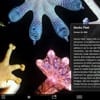Resources with AWESOME Content for FREE!!!
Sharing content online has become an extremely important part of our online presence. While original content reigns supreme, a high percentage of our output comes from other sources. With Facebook, Twitter, Google +, and countless other networks surfacing daily, there is plenty of space to fill. Companies should have a focus on what they want to share with their audience, but there are so many small organizations and individuals that don’t have a plan. What should we post? Where do I find content to share? It may sound elementary, but you want to focus your efforts on content in your niche. Starbucks is not talking about Healthcare on their Twitter feed, and you shouldn’t get too far away from your core either.
So, where do I find quality content on large range of topics? Facebook, Twitter, Google + are laced with great content. This issue with these three giants is that it becomes a hunt, and it wouldn’t be deemed the most efficient way to curate. Below are 4 sites that give you the key to a quantity of quality.
Scoop.It! – Allows individuals and organizations to create online magazines. As an user you create topics with keywords. So you create a topic called “Social Media Now” and use the keywords Twitter, Facebook, and Google+. When you hit the “Curate” button recent stories will appear that include one or more of your keywords. You can then Scoop-It for your magazine. This content is now a part of your magazine for that topic. You have the option to share any story on Twitter, Facebook, and/or Linkedin at the same time via a check box system. You can also share to Pinterest, Google +, and StumbleUpon through the Scoop-It interface. It’s a fairly open network that allows you to follow, rescoop, and favorite content of others. It’s not going to be confused with Facebook in terms of interaction with other users, but there is definitely a fair amount of give and take that makes the experience worthy. My one suggestion here would be to not exceed 3 topics. It becomes too much to manage when you have too many topics.
My Scoop.it site: http://www.scoop.it/t/online-blended-schooling
Business 2 Community – B2C is a blog syndicate focused on Social Media, Technology, and Business, etc. It also spans to topics such as Automotive, Entertainment, and Sports to name a few. Their content originates from thousands of bloggers that connect to the network. This content is republished on the B2C site by category within 1-5 days of the original posting. There is a ton of valuable content on the site and it just keeps on coming. A new article appears every 10-20 minutes and starts on the front page. After its time on the front page you can find it sitting in a specified category. It would take you weeks to read all the content on B2C at any one time. As with Scoop-It sharing is made easy across all the major networks. As a matter of fact, this article with be on the B2C site in the next couple of days.
Topsy – Is a real-time search engine that really meshes well with Twitter. This network launched almost three years ago to the day, and seems to fall under the radar. You need to get in there and experience, especially if you’re active on Twitter. When you first go to the site you’ll see what is trending today and a small orange number that shows the number of times the story has been posted. You’ll also see a Real-Time Search Box. Below is a search for “Marketing Strategy” with some of the stats. You can retweet a story right from the interface. Topsy also allows too follow users on Twitter by hovering over their picture without leaving the network. Finally, you can search by Photos, Videos, and Experts.

















 Summer reading tips from NEA (pdf) available in
Summer reading tips from NEA (pdf) available in